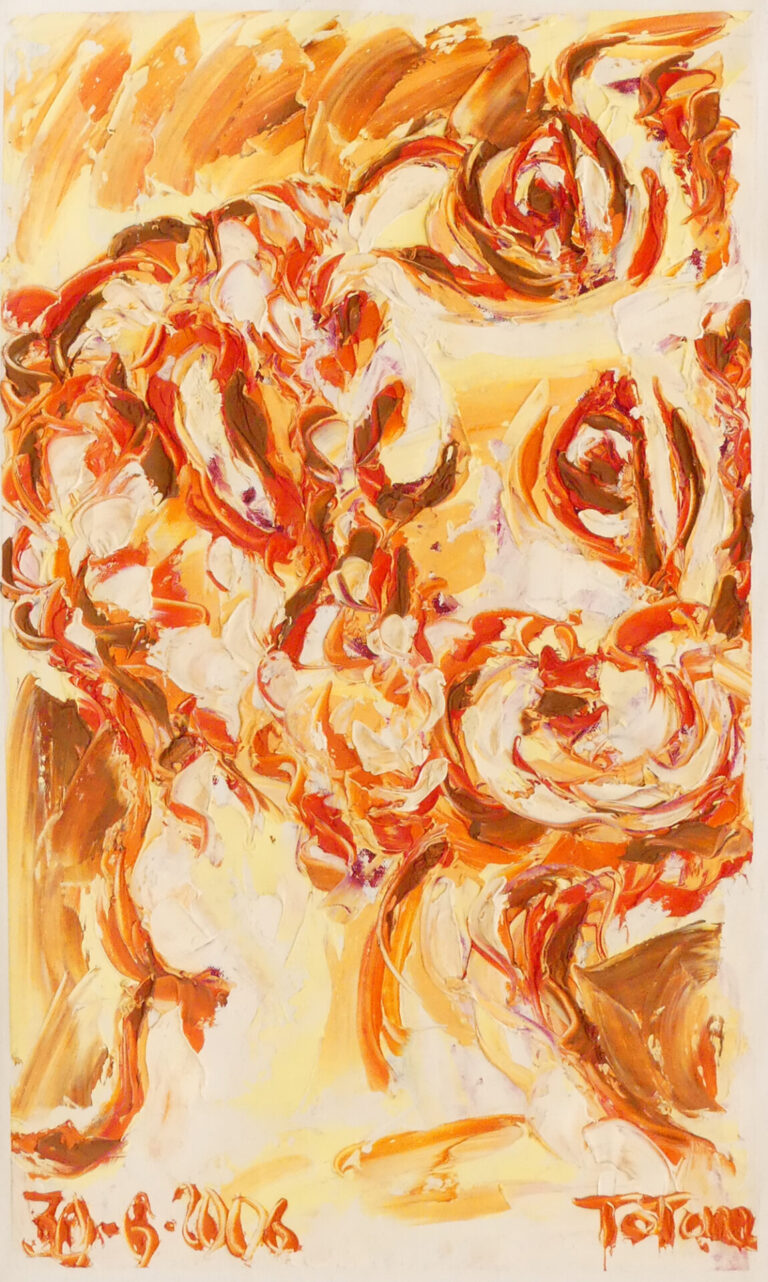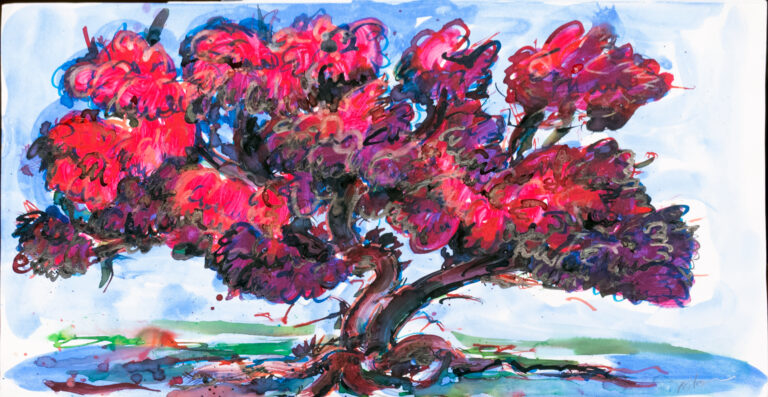The artist, before being an artist, feels the need to express something inexpressible. He is not comfortable, he is not pleasant, in fact, many times, no one dares to talk about it.
The artist is that person who searches for language, words, symbols, the way to communicate what we are afraid to tell. He clings to the need to express it, and with that need, he delves into a search that little by little becomes passion, until one day, it transforms into art.
Art is not free, it requires effort, dedication, ingenuity and above all courage, because you have to be very brave to talk about what others do not want, or do not know, or cannot talk about. And you have to have courage, because maybe no one wants to listen to it.

When we fall in love, some shyly express themselves, quietly, with looks, with gestures. Others are more daring with words, with words that seek a correspondence. Sometimes, depending on whether it is more or less reciprocated, one dares more.
The artist, without fear, strips naked and shows his feelings. He does not expect approval, nor does he expect to be understood, nor does he expect to be heard, just to express what he feels, what others see, but remain silent, what others may not want to hear.
Art is not afraid of any feeling. Art is a language that seeks to communicate, it not only speaks of love, or sadness, everything that moves us, that cracks our soul, that expands our consciousness.
Don’t be intimidated when looking at a work of art, just open your mind and observe, listen, feel. A work of art confronts you with something, evoking feelings and emotions that we often do not know, or do not want to face.
The language of art is symbolic, it is textures, colors, balances, harmonies… The language of art is an internal, sensitive language. Sometimes we find it in dreams, other times in nature, but it is a unique language.
The artist, at the beginning of his career, often does not know exactly what he wants to express, he just searches. He investigates the language that he will want to use and takes advantage of it. Sometimes he explores certain textures, colors or structures. Maybe techniques that he repeats until he understands them.
The beginning artist learns the language of feelings from him. Sometimes they are just shapes, faces, looks, gestures… that he repeats tirelessly. Just like when we learn to read and write, we repeat the same letters until we know them, write them well and memorize them. In the same way, the beginner tirelessly repeats certain shapes, colors, structures that are comfortable for him.
Sometimes, little by little, you will alter those already known shapes, maybe distort, change colors, play with contrasts… you need to get there, where you can’t see, where you can’t speak, where there is nothing or maybe there is, but everything there is is ethereal.
Little by little, these known forms become useless. The techniques learned no longer serve you. The same thing happens when as teenagers the learned calligraphy limits us, we feel that it does not represent us, and we break with that calligraphy.
Some artists, in this need to expand their language, study other artists. They recreate the ways that others achieved, and it is a wonderful way to learn. Just like reading a book and interpreting it in our own way, the artist recreates an old painting, just like a cover, a remake.
After this, without scruples, without regard, the consecrated artist, the one who already knows the language of feelings, the one who knows how to evoke a smile, a cry, an anguish, the one who knows how to cheer the soul, creates his own language, in order to express that which is inexpressible.
Art is not easy, it is brave. The artist travels a terrifying path, which does not end in a lifetime, which delves into everything that has no words or forms, which materializes and formulates the exact words so that the lucky one who appreciates his work is moved, not by the artist, nor for his work, but for everything that the artistic work seeks to evoke.






